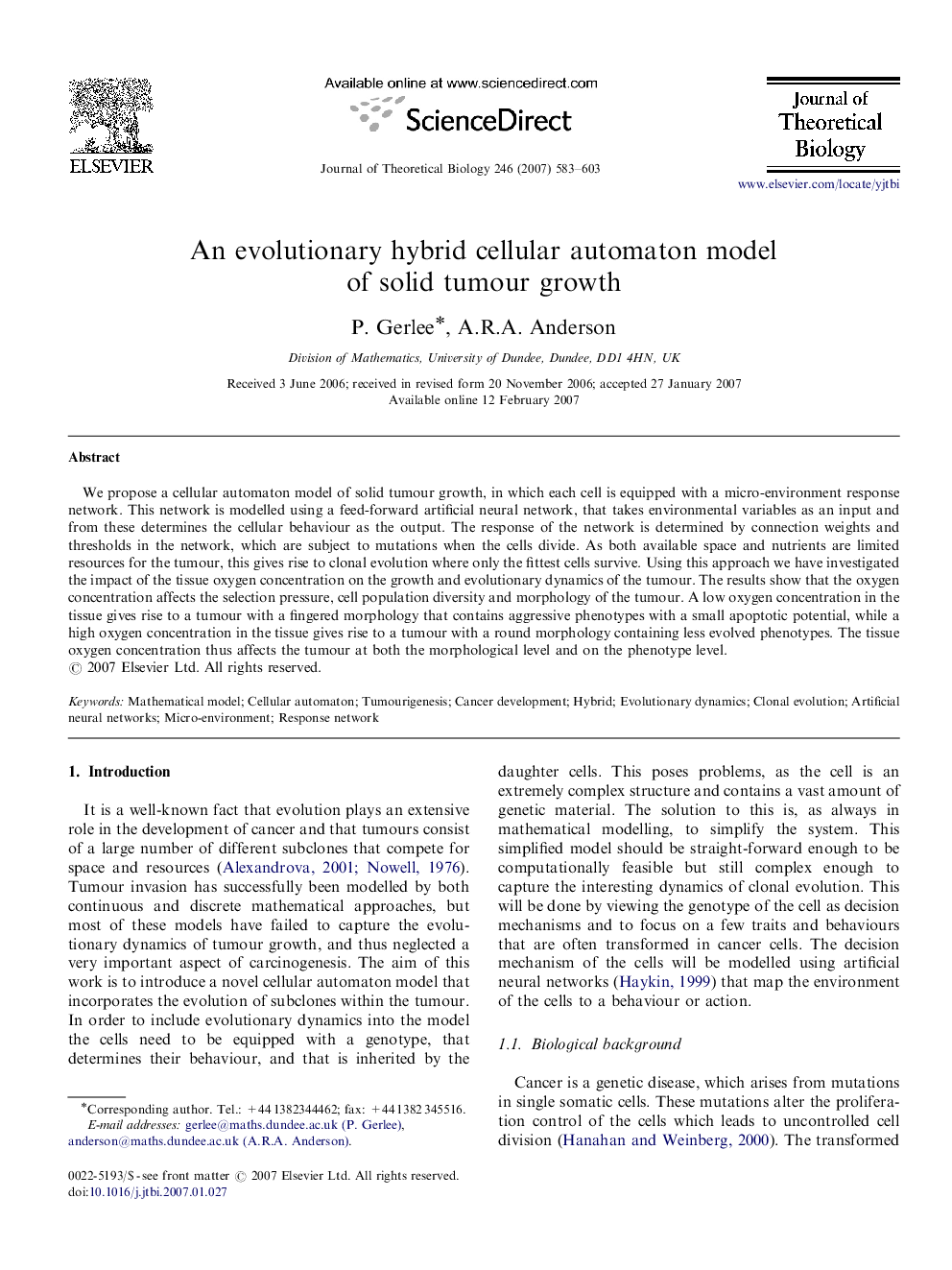| Article ID | Journal | Published Year | Pages | File Type |
|---|---|---|---|---|
| 4498933 | Journal of Theoretical Biology | 2007 | 21 Pages |
We propose a cellular automaton model of solid tumour growth, in which each cell is equipped with a micro-environment response network. This network is modelled using a feed-forward artificial neural network, that takes environmental variables as an input and from these determines the cellular behaviour as the output. The response of the network is determined by connection weights and thresholds in the network, which are subject to mutations when the cells divide. As both available space and nutrients are limited resources for the tumour, this gives rise to clonal evolution where only the fittest cells survive. Using this approach we have investigated the impact of the tissue oxygen concentration on the growth and evolutionary dynamics of the tumour. The results show that the oxygen concentration affects the selection pressure, cell population diversity and morphology of the tumour. A low oxygen concentration in the tissue gives rise to a tumour with a fingered morphology that contains aggressive phenotypes with a small apoptotic potential, while a high oxygen concentration in the tissue gives rise to a tumour with a round morphology containing less evolved phenotypes. The tissue oxygen concentration thus affects the tumour at both the morphological level and on the phenotype level.
